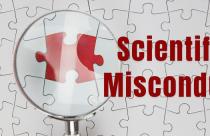When Science Gets Misused

Only a Representative Sample
Students of research methodology and statistical analysis are very familiar with the importance of working with a study sample that can claim to be representative of a larger population. Without it, any extrapolation of data becomes meaningless. However, once the results of a study have been released, the manner in which that data is used often bears no relation to the original work, as users appear to feel fully entitled to use or misuse it as they see fit.
The news media in particular has become notorious for presenting “scientific proof,” that is itself a complete misnomer, on graphs with y-axes that are modified to increase or decrease the selected rate of change of a variable. In addition, pie charts are thrown up on the screen so quickly that you need to pause the program and check back before you realize that the combined total of the slices exceeds 100%.
Market Leveraging the Power of the White Coat
The power of a recommendation from a medical professional has always been very attractive to the advertising industry. Back in the late 19th and early 20th centuries, images of doctors and pharmacists recommending cocaine as a health tonic were not uncommon, and drawings of doctors enjoying cigarettes were very prevalent in the 1940s and 50s.
Today, we are still bombarded with messages where nine out of ten doctors, pharmacists, and dentists recommend a product or treatment, with a block of disclaimer text on the screen that is too small and shown for too short of a time to be legible. The “study” being referenced is typically heavily skewed in favor of the product being advertised, and good luck trying to access the original research data!
Pledging Allegiance to the Corporation
Since such advertising tactics have been in use for decades, we can only hope that the general public has learned to treat such recommendations with a healthy dose of skepticism.
In more recent years, however, the growing presence of corporate funding of scientific research has led to the development of relationships that are much less obvious and much more insidious. Consider, for example, the 2014 case of Coca Cola Vice President and Chief Scientific and Regulatory Officer, Dr. Rhona Applebaum, who responded to the proposal of a bill in the House of Representatives requiring a tax on sugar-sweetened beverages with a tweet warning that a sugar-free diet “could kill you.” The supporting documentation for the claim referenced a UK study examining the fad of sugar-free diets. The concluding commentary on the study did note that cutting all sources of sugar from your diet—“fruits, vegetables, dairy products and dairy replacements, eggs, alcohol and nuts”—could be fatal since it would only leave meat and fat to eat, but there was clearly no suggestion that avoiding soda would have the same outcome.
The End Justifying the Means
Research on scientific misconduct and corporate malfeasance finds a common element—there is always a rationalization for the unethical conduct. Whether the behavior is dismissed as “just this once” or “everybody does it,” the validation is always projected away from the perpetrator.
Leveraging your science qualifications to add an undeserved level of credibility to your statements represents a far more grievous misuse of science than simply moving lines on a graph. Your peers, who have invested just as much time and effort to earn the same qualifications and expertise as you, deserve better, as does the general population that continues to value the advice of qualified “experts.”









